What the ... ?
It’s 45F out there as I write this newsletter. Spring in South Carolina displays some of the wildest swing in temperatures. Sometimes that can be a 40-degree swing.
I know I shouldn’t even contemplate a whine. “Think of all the snow-covered people in the Hudson Valley,” you said. But whine I shall—as a boy who grew up in the Tropics, I’m simply not a man of cold weather. I eagerly await my speaking trip to Naples, Florida, tomorrow and a meeting trip to Phoenix, Arizona, next week.
I think the perfect walk-in-the-woods weather is when there's a light breeze, but warm—say about 70F. My wife and her dog even deemed it suitable to join me. We embarked on one such walk yesterday and found many caterpillars feeding on oak leaves and crawling on the ground.
“Are they venomous?” my wife asked. I responded, “Venomous? What a poor choice of words.”
Poor girl … I don’t know how a wonderful painter like her stands talking to a wonky scientist like me.
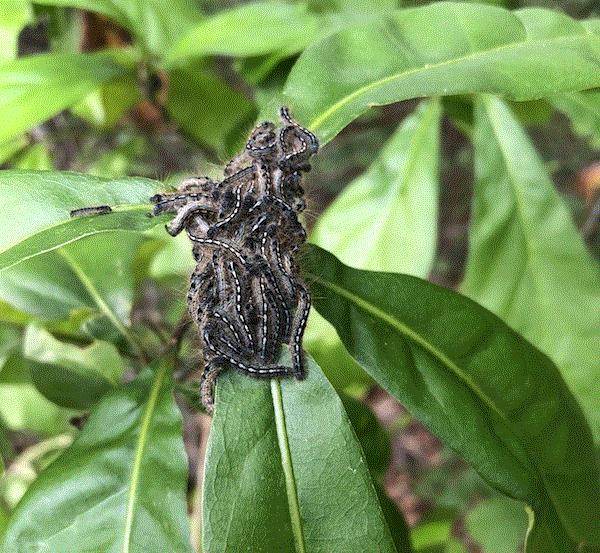
The non-venomous caterpillars are the forest tent caterpillars. They’re cousins of the eastern tent caterpillar, which is also active this time of the year. Y’all can easily distinguish the two species by the pattern down the middle of their backs. The line is solid in the eastern tent caterpillar, whereas it’s broken and almost dot-like in the forest tent caterpillar. Click HERE for a good resource on distinguishing the forest tent caterpillar from the eastern tent caterpillar and the spongy moth (formerly known as the gypsy moth).
I haven’t talked about the forest tent caterpillar in this newsletter before because I haven’t seen them in huge numbers until this year. This is a species that appears to have cyclic outbreaks every six to 16 years. Kevin Chase of Bartlett Tree Experts and I were wondering if we’re seeing the beginning of an outbreak, which may take a few years to develop. Are you seeing more forest tent caterpillars this spring? Drop me an email HERE.
The population I saw was feeding on water oaks, but the forest tent caterpillars can also feed on sweetgum, tupelo, basswood, wild cherry and other broadleaf trees. Since they feed gregariously, a group can defoliate a small tree quickly. Unless severe defoliation is possible or y’all are bothered by the wandering caterpillars or the droppings, I don’t think there's a strong case for managing the forest tent caterpillar population in urban forests.
Also, it seems like a losing cause to treat for just the caterpillars on one’s property during an outbreak when many moths or caterpillars can easily reinvade. When needed, repeated applications of Bt products, such as Dipel and Xentari, can be effective if the applications target young caterpillars. I discourage spraying any broad-spectrum insecticides to avoid reducing the natural enemies of the caterpillars.

April is for Hungry Pests
It was also during one of these walks in the woods that I heard a public service announcement about “hungry pests” last week. I don’t usually allow radio or podcasts to ruin my walk, but for some reason, I had a local news program livestreamed from my phone this time. I wasn’t exactly happy with the use of “hungry pests” because, really, which pest is not hungry?
USDA once again declared April as Invasive Plant Pest & Disease Awareness Month. Ever the lovers of acronyms, USDA dubbed the month IPPDAM. I would have thought that’s a type of computer chip.
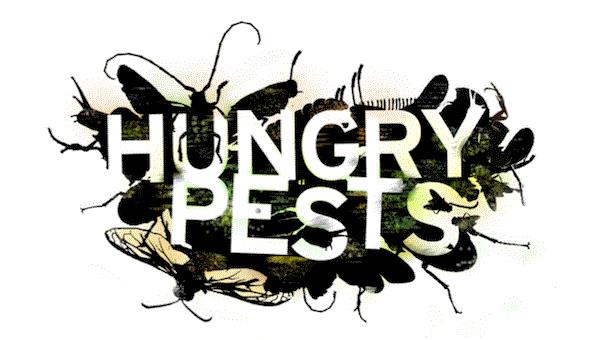
But invasive pests are nothing to laugh about. Think boxwood blight, emerald ash borer and spotted lanternfly. USDA will conduct more outreach during IPPDAM to highlight the impact of invasive pests and diseases on American agriculture, forests and well being. USDA also offers several dos and don’ts to help minimize your contribution to the introduction of invasive pests and diseases. These include:
-
Familiarize yourself with invasive pests in your area, including signs of infestation
-
Report invasive pests to your local Extension Service, state departments of agriculture and USDA when signs of infestation are detected
-
Declare all agricultural items at customs when returning from overseas
-
Don’t move untreated firewood
-
Source your seeds and plants responsibly
-
Don’t mail homegrown plants, fruits and vegetables
Find out more about IPPDAM by clicking HERE.

MGK Acquires the Debug Brand
MGK announced on the last day of March that it has acquired the Debug brand from Agro Logistic Systems. MGK is a subsidiary of Sumitomo Chemical Company and is based in Minneapolis. Debug brand products contain various concentrations of neem oil and azadirachtin, and are OMRI-listed. Debug brand products will complement the existing product line of MGK, which includes PyGanic, Tersus and EverGreen (all pyrethrins), and Azera (azadirachtin + pyrethrins).

Managing Root Mealybugs
I want to introduce y’all to a study published in the Journal of Environmental Horticulture in December 2021. This study, conducted by Stanton Gill of the University of Maryland and Brian Kunkel of the University of Delaware, evaluated the efficacy of a group of new conventional insecticides and biopesticides in managing root mealybugs and rice root aphids.
Let’s start with the root mealybug. I hope y’all have at least heard of it. I come across infestation only occasionally, typically in conservatories or in potted plants that have been around for a while (thus allowing the mealybug population to build up). The “occasional” status may be an artifact of not seeing the infestations because the insects feed underground. Like other mealybug species, the root mealybugs also produce white wax. These wax deposits on the surface of root balls can be a useful diagnostic characteristic. (Similar to the wax deposits of the root aphids shown in the next article.)
Three trials were conducted in 2018 and 2019 to evaluate the efficacy of preventive and curative treatments with various application rates of flonicamid (Aria), flupyradifurone (Altus), chlorantraniliprole (Acelepryn), cyantraniliprole (Mainspring), pymetrozine (Endeavor), Beauveria bassiana (Mycotrol), Burkholderia spp. (Venerate), Chromabacterium subtsugae (Grandevo), and Steinernema carpocapsae (Millenium). The treatments were applied either as foliar spray or media drench. The treatments were replicated six or eight times.
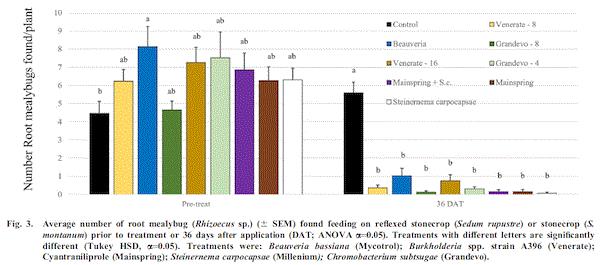
Curative treatment (i.e., against an existing infestation) with one application of Acelepryn, Altus, Aria and Endeavor practically eliminated the mealybug population at 33 days after treatment, whereas Mainspring reduced the population by about 70%.
Preventive treatment (i.e., before infestation) with one application of Aria and Altus also greatly reduced mealybug population at 33 days after treatment. What’s interesting to me is that curative treatment with Grandevo, Mycotrol and Venerate (three weekly applications), and Mainspring and Millenium (one application) also greatly reduced mealybug population 36 days after the first treatment.
An interesting tidbit from the published work is the observation of greater ease of movement of mealybugs among plants when plants are placed on a weed-barrier mat. So a potential cultural management approach is to grow plants on benches.
Click HERE to access the article. Also, read a two-part series on root mealybugs by Stanton, Brain and their colleagues in GrowerTalks by clicking HERE.

Managing Root Aphids
Y’all have heard about rice root aphid as a pest of cannabis. Before that, it’s a pest of many ornamental plants. Similar to the root mealybug, the rice root aphid also feeds on the roots and the base of plants, leaving behind white waxy deposits on the root surface.
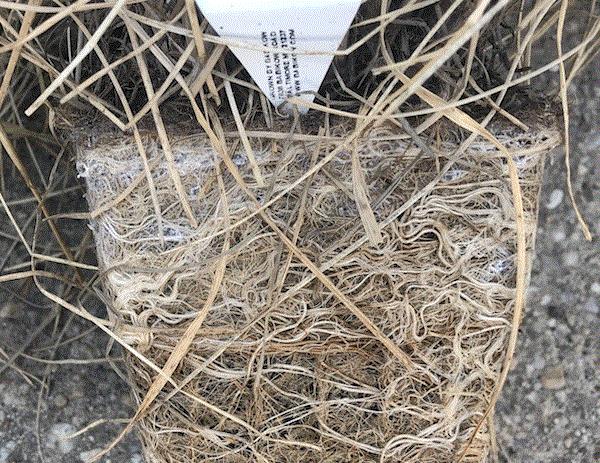
Root mealybugs and root aphids leave behind white waxy despoits on the surface of root balls. (Photo credit: Stanton Gill, University of Maryland.)
Stanton and Brian conducted one trial in 2020 to evaluate the efficacy of chlorantraniliprole (Acelepryn), cyantraniliprole (Mainspring), pymetrozine (Endeavor), Beauveria bassiana (Mycotrol), Burkholderia spp. (Venerate), Chromabecterium subtsugae (Grandevo), and two experimental products against rice root aphids. The experimental products were applied four times at three or seven days, and the other treatments were applied once. All treatments were curative and were made as a sprench. Each treatment was replicated four times.
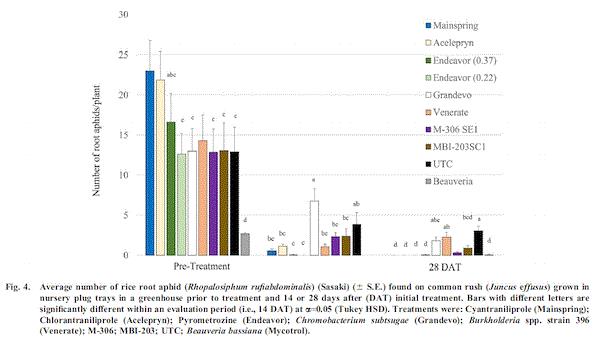
At 14 days after the first treatment, Grandevo was the only one that didn’t significantly reduced aphid abundance when compared to the water check. Grandevo and Venerate were the only treatments that didn’t significantly reduced aphid abundance at 28 days. Acelepryn, Mainspring and Endeavor appeared to be the most effective products in this trial. Mycotrol seemed to result in low aphid abundance at 28 days after the first treatment, but the pre-treatment aphid abundance in this treatment was much lower to begin with. I think more studies will be needed to further evaluate its efficacy.
Click HERE to access the article.




See y'all later!

JC Chong
Professor of Entomology at Clemson University
This e-mail received by 27,187 subscribers like you!
If you're interested in advertising on PestTalks contact Kim Brown ASAP!